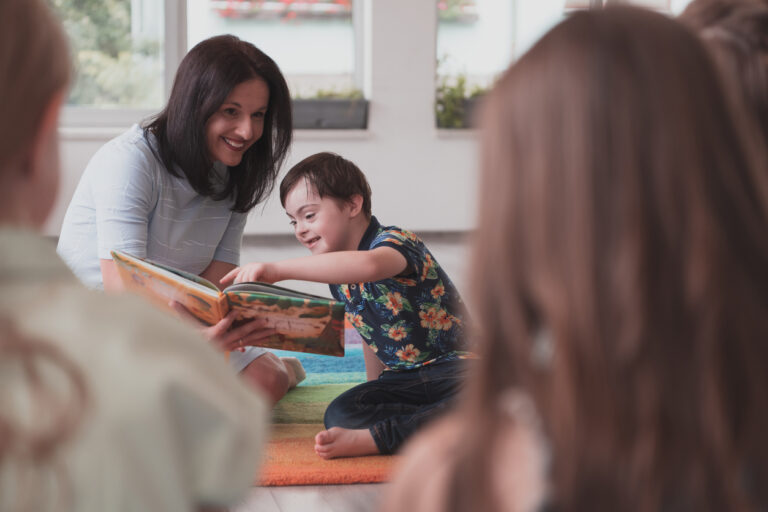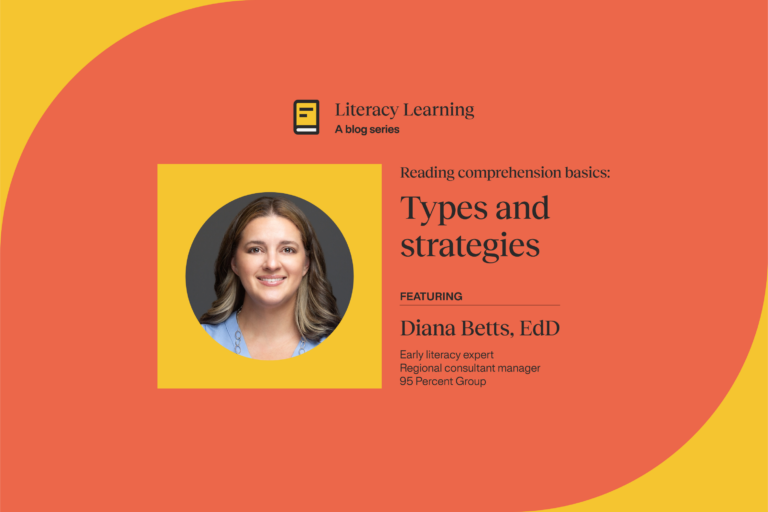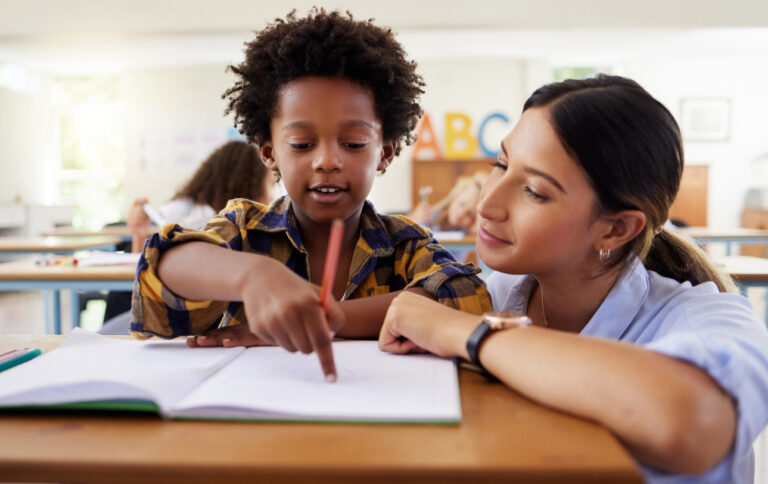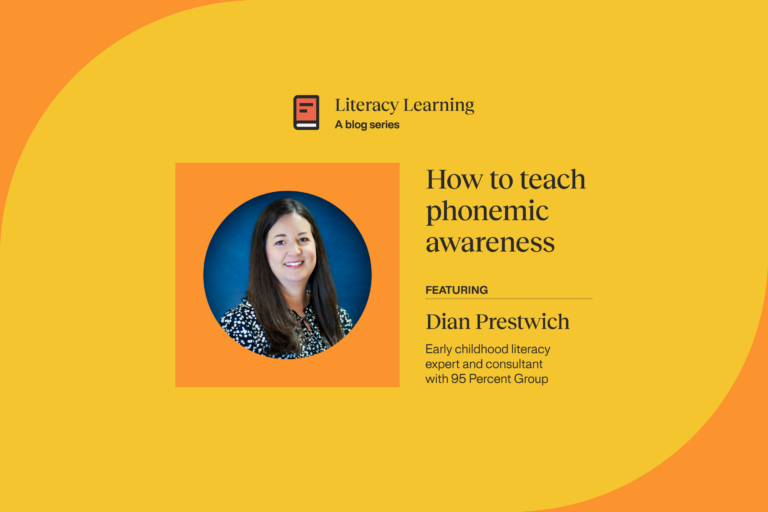Reading to learn WHILE learning to read
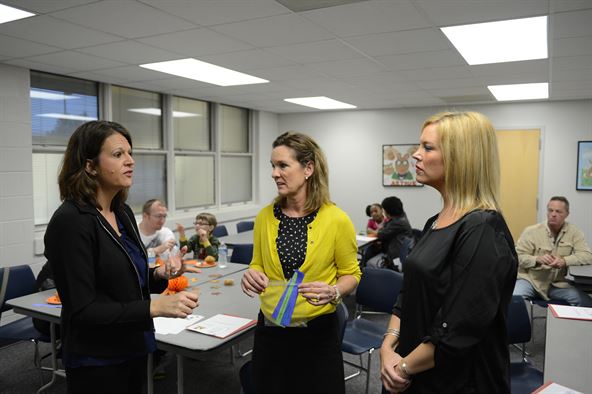
Since the advent of the Common Core, we have seen a flood of informational text in classrooms. While this is seemingly all good, there is reason for caution, particularly when we think about text use in the K-2 “learning to read” years. What is the place of informational text in the primary grades? How do we maximize the potential of informational text for our youngest learners?
Scaffolding informational text for all ages
Informational text is rich with ideas and opportunities to learn about the world; there is no doubt that we need informational text right from the start! When we consider the opportunities for informational text experiences, we need to think about the focus, the format, and the text type. Let’s consider some different opportunities for informational text in primary classrooms:
- Interactive Read-Alouds are focused on building listening comprehension and are typically done in a whole class format using above-grade-level text.
- Shared Reading lessons are focused on modeling, demonstrating and interacting with text and are typically done in whole class format using grade-level text.
- Independent Reading is focused on building stamina and independence, developing content knowledge, and nurturing reading enjoyment. The format is individual and is done with text that a student can read on their own with a sufficient degree of accuracy.
What about small-group guided reading experiences? Since this is the bulk of our targeted instructional time, how might these look in K-2 with instructional text? In order to answer that question, we need to put small-group, text-focused guided reading in context. As children are learning to read, their core instructional lessons need to focus on the sequential, systematic teaching of the foundational skills of reading, with the application of those skills in appropriate text.
For example, K-1 students are receiving instruction in phonics and therefore need to read decodable texts that match their emerging skills; decodable controls give way to more complex text as their decoding skills are solidified. The question then becomes—how do we utilize informational text of appropriate complexity in small groups?
Differentiated instruction vs differentiated text
The prevalent practice for small group instruction is the use of “leveled text.” While the idea is that all children will be reading at their “level,” what actually happens is the classic case of the rich get richer and the poor get poorer. The pervasive use of reading levels keeps many children from ever having small-group, intimate experiences with text of grade-level complexity, keeping them from the content, language, and richness that their “higher-level” peers may be experiencing.
In order to ensure that all of our students have access to high-quality, grade-level informational text, we need to consider how we can use a common text for all of our students, but adjust the small group lesson itself. This would allow all students to access the meaning of the text and apply the reading skills and strategies appropriate to their development.
This is a different view of small-group instruction, where differentiated instruction prevails over differentiated text. Using grade-level text with all students not only provides all of our children with the same rigorous content, but it puts the decision-making in the hands of the teacher, empowering her to adjust instruction to scaffold all students to grade level.
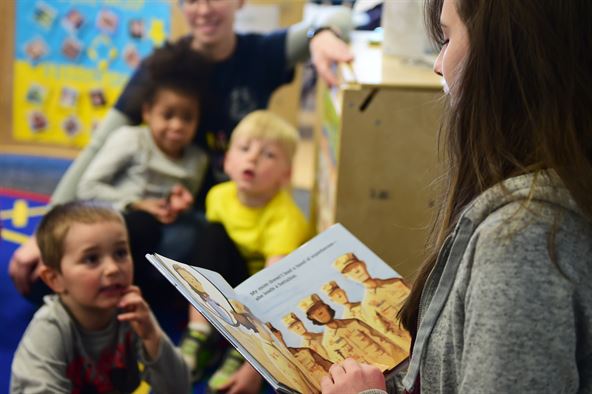
How do we move from simply relying on different levels of texts to relying on differentiated instruction within grade-level texts? Planning is key! We may want to consider these questions as we plan our lessons:
Lesson step 1: prepare for the reading
- What background knowledge about this topic do my students possess?
- Which concepts and vocabulary need to be elicited from the students or developed through instruction before reading?
- What is the overall purpose for the reading (essential information I want my students to know), and how can I state this for the students?
- How can I build excitement for reading by engaging students in previewing the text (using the cover, illustrations, or other features)?
Lesson step 2: guide the reading
- What vocabulary or concepts should be taught during the reading so that my students can understand the text? What text features and illustrations need to be utilized in order to make the text accessible?
- Given the big, important ideas of this text I want my students to understand, what strategies can I teach or model that are appropriate for this text?
- What are some ways I might moderate this text for different groups of students? Examples:
- Group 1: Students working on decoding. In order to access this text, what phonetic elements and decoding strategies do I need to teach and/or review? How can I utilize words or passages from the text for their own decoding, while modeling other passages aloud?
- Group 2: Students decoding accurately and working on fluency. How can I use this text to model characteristics of fluent reading? Can I follow up the reading with shared and unison reading for practicing fluency? Are there other ways for students to utilize this text for fluency building (assisted reading with audio, partner reading, choral reading)?
- Group 3: Students reading with accuracy and fluency at grade level or above. How can I use this text to consolidate their skills and focus on deeper comprehension? How can I follow up this reading with challenge text experiences?
- With all students, how do I infuse the guided reading with comprehension skills and strategy instruction appropriate to this text?
Lesson step 3: follow-up to the initial reading
- What embedded skill or strategy that was utilized in the initial reading might I return to in order to explicitly revisit and emphasize?
- How can I check for students’ understanding? What reteaching will I need to do if they do not demonstrate understanding?
Lesson step 4: facilitate connections
- Does the text experience authentically lend itself to making connections in writing, technology, additional reading, content areas or the fine arts?
- How can I formulate a meaningful follow-up activity to help students make these connections?
As you can see, this model puts the emphasis on instructional planning and delivery rather than choosing a book “level.” Also, while this example focused on informational text, this concept of differentiating instruction within a common text is applicable to fiction as well.
As we consider the ascendancy of information text in all grades, giving specific attention to how that looks in K-2 is important! We want ALL children to “read to learn” while “learning to read.”
About Laura Stewart
Laura Stewart is an educator and organizational leader. She has served as a classroom teacher, building and district administrator, adjunct professor, and director of numerous professional development initiatives around the country. She also served as the Vice President of Professional Development for both Rowland Reading Foundation and Zaner-Bloser.
In her current position as the Chief Academic Officer, Professional Development for the Highlights Education Group, she works across several companies to offer high-quality professional development which will empower educators and positively impact children’s lives.
She presents nationally and internationally and has written for numerous organizations and publications; she recently co-authored The Everything Guide to Informational Text K-2; Best Texts, Best Practices. Laura is a certified LETRS trainer and was recently appointed to the advisory board of the International Foundation of Effective Reading Instruction.
